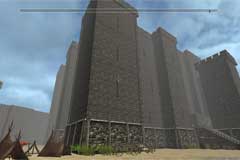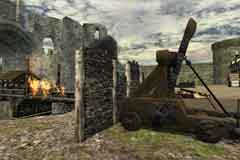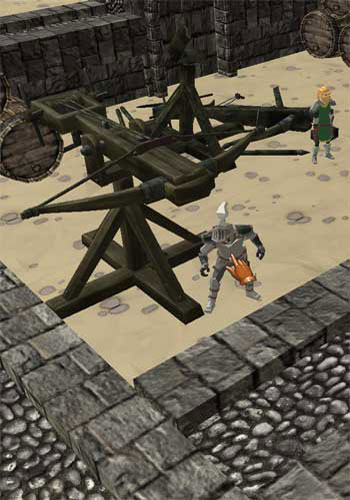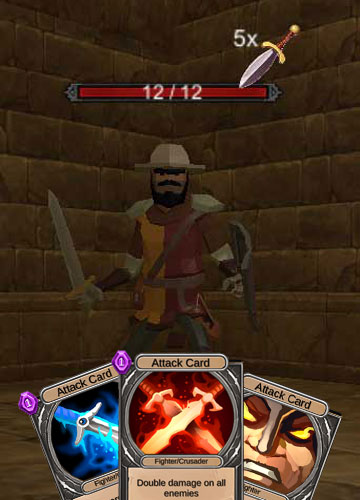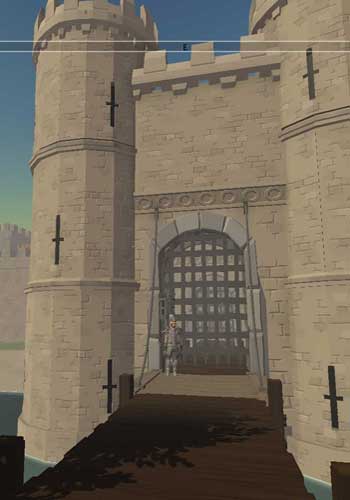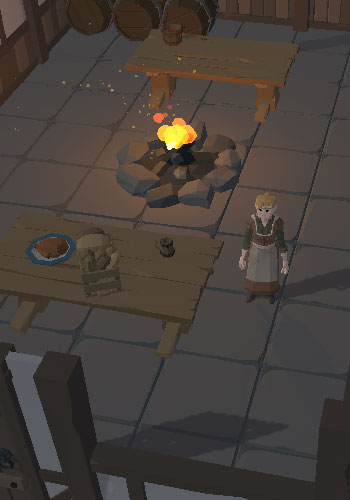Episodes of Medieval History
Tweet







Early Middle Ages
The Early Middle Ages are defined as the period in European history between the 6th and 10th centuries (c. 500-1000). This is the period that followed the decline of the Roman Empire. The period is also known as the Dark Ages.

Saxons, Angles, Jutes and Vikings
| Episode | Years | Details | Timeline |
| Saxons, Angles and Jutes invade Britain | 410 - 700 | The Saxons, Angles, Jutes and Frisians were tribes of Germanic people who originally came from the area of current northern Germany and Denmark. These tribes invaded Britain during the Roman occupation and again once it had ended. | |
| Seven Main Anglo-Saxon States | 491 - 800 | By the 7th century seven distinct states existed in Britain. These were East Anglia, Essex, Kent, Mercia, Northumbria, Sussex and Wessex. | |
| Viking Invasions | 787 - 1042 | Viking invasions started in around 790 AD when the monastery at Lindisfarne was attacked. Over the next two hundred years the Vikings repeated invaded the British Isles. | Timeline |
(410) The Saxons were a tribe of Germanic people who originally came from the area of current northern Germany. They invaded Britain during the time of Roman occupation.
(787-1042) Viking invasions started in around 790 AD when the monastery at Lindisfarne was attacked. Over the next two hundred years the Vikings repeated invaded the British Isles.
High Middle Ages

The High Middle Ages are defined as the period in European history between the 11th and 13th centuries (c. 1001-1300). The period is noted for its large increase in population and a move from rural to urban living. The Vikings had ended their invasions and they had settled in Britain, France and other parts of Europe. Learning increased with the foundation of several universities.
Estimated Population of England
Rough estimated populations for England from the 10th to the 16th centuries, with conservative ranges and short notes about reliability. For reference, the current population is around 60 million, between 25 and 30 times the number after the Black Death.
| Year (approx) | Best estimate | Scholarly range | Notes |
| c. 1000 | ≈ 1.5 million | 1.2 - 1.7 million | Very rough; pre-Domesday estimates based on later back-projections and settlement evidence. https://en.wikipedia.org/wiki/ |
Anglo-Saxons
| Episode | Years | Details |
| Edward the Confessor and Earl Godwine | 1045 - 1053 | Edward the Confessor became King of England in 1042 after the death of Harthacnut, the son of Canute. Edward was the son of Athelred (Ethelred) the Unready and Emma. What was the relationship between Edward the Confessor the King of England and the powerful Earl Godwine and his family? |
(1045-1053) Edward the Confessor became King of England in 1042 after the death of Harthacnut, the son of Canute. Edward was the son of Athelred (Ethelred) the Unready and Emma. What was the relationship between Edward the Confessor the King of England and the powerful Earl Godwine and his family?
Norman Invasion and Conquest
| Episode | Years | Details |
| Reasons for the Norman Invasion | 1053 - 1066 | When Edward the Confessor died on January 4th 1066 he did not have a son or daughter to become the new King or Queen of England. Discover the three claimants who fought to take the throne. |
| The Norman Invasion | 1066 | William the conqueror was only one of three claimants to the English throne. Discover the events leading up to him becoming the ruler of England. |
| The Norman Conquest | 1066 - 1086 | When William the Conqueror became King of England on Christmas Day 1066 his fight to control England had just begun. For the remainder of his reign he had to put down revolts and reorganise the way in which the country was run. |
(1053-1066) When Edward the Confessor died on January 4th 1066 he did not have a son or daughter to become the new King or Queen of England. Discover the three claimants who fought to take the throne.
(1066) William the conqueror was only one of three claimants to the English throne. Discover the events leading up to him becoming the ruler of England.
(1066-1086) When William the Conqueror became King of England on Christmas Day 1066 his fight to control England had just begun. For the remainder of his reign he had to put down revolts and reorganise the way in which the country was run.
The Crusades
| Episode | Years | Details |
| Background to the Crusades | A brief explanation of the events concerning the Crusades. | |
| People's Crusade and the First Crusade | 1096 - 1099 | Brief descriptions of the ealy Crusaders and the events surrounding their attempts to retake the city of Jerusalem. |
| The Second Crusade | 1148 | In 1148 the county of Edessa, a Crusader state, was captured by Zengi, the ruler of Mosul. This triggered the Second Crusade. |
| The Third Crusade | 1190 - 1191 | When the Christian Army of Jerusalem was beaten by Turkish forces at the Battle of Hattin, the Archbishop of Tyre was dispatched to Europe to inform the Pope and European leaders of the disaster that had taken place and to ask for help. |
| The Fourth Crusade | 1202 - 1204 | This Crusade was originally intended to recapture Jerusalem from Muslim control but ended in the sack of Constantinople, the capital of the Byzantine Empire, in 1204. |
A brief explanation of the events concerning the Crusades.
(1096-1099) Brief descriptions of the ealy Crusaders and the events surrounding their attempts to retake the city of Jerusalem.
(1148) In 1148 the county of Edessa, a Crusader state, was captured by Zengi, the ruler of Mosul. This triggered the Second Crusade.
(1190-1191) When the Christian Army of Jerusalem was beaten by Turkish forces at the Battle of Hattin, the Archbishop of Tyre was dispatched to Europe to inform the Pope and European leaders of the disaster that had taken place and to ask for help.
(1202-1204) This Crusade was originally intended to recapture Jerusalem from Muslim control but ended in the sack of Constantinople, the capital of the Byzantine Empire, in 1204.
King Stephen's Succession
| Episode | Years | Details |
| Stephen's succession to the throne | 1135 | The epsiode is concerned with the events the led up to the Civil War between King Stephen and Matilda, the daughter of Henry I. |
| The Civil War between Stephen and Matilda (The Anarchy) | 1139 - 1154 | The events concerning the Civil War between King Stephen and Matilda over the English throne. |
(1135) The epsiode is concerned with the events the led up to the Civil War between King Stephen and Matilda, the daughter of Henry I.
(1139-1154) The events concerning the Civil War between King Stephen and Matilda over the English throne.
Estimated Population of England (1200)
| Year (approx) | Best estimate | Scholarly range | Notes |
| c. 1200 | ≈ 2.3 million | 1.8 - 2.6 million | Growth in the high medieval period; estimates usually for England (sometimes England & Wales). https://en.wikipedia.org/wiki/ |
Henry II - King John - Henry III - Edward I
| Episode | Years | Details |
| The Conquest of Ireland | 1166 - 1171 | A Norman invasion of Ireland occurred when Dermot, King of Leinster in Ireland, was exiled and asked King Henry II for help to regain his lands. |
| Henry II and Thomas Becket | 1162 - 1174 | The events concerning the conflict between King Henry II and the Archbishop of Canterbury that led to his death. |
| Excommunication of King John | 1209 - 1214 | King John's interference with the selection of an Archbishop led to his excommunication. |
| The First Barons' War | 1217 | Unhappy with the way King John was running the country, Stephen Langton the new Archbishop of Canterbury and many barons of England drew up a new charter for the King to sign. |
| The Second Barons' War | 1258 - 1267 | The Barons rose up against the misrule of the England by the foreign advisers of Henry III. |
| Edward I and Wales | 1276 - 1284 | Edward I declared war on Wales after Llewelyn ap Gruffydd, the Prince of Wales, revolted against the English king. |
| Edward I and Scotland | 1286 - 1306 | After the tragic death of the Maid of Norway on the Orkney islands the succession of the Scottish throne was disputed leading to an English invasion of Scotland. |
(1166-1171) A Norman invasion of Ireland occurred when Dermot, King of Leinster in Ireland, was exiled and asked King Henry II for help to regain his lands.
(1162-1174) The events concerning the conflict between King Henry II and the Archbishop of Canterbury that led to his death.
(1209-1214) King John's interference with the selection of an Archbishop led to his excommunication.
(1217) Unhappy with the way King John was running the country, Stephen Langton the new Archbishop of Canterbury and many barons of England drew up a new charter for the King to sign.
(1258-1267) The Barons rose up against the misrule of the England by the foreign advisers of Henry III.
(1276-1284) Edward I declared war on Wales after Llewelyn ap Gruffydd, the Prince of Wales, revolted against the English king.
(1286-1306) After the tragic death of the Maid of Norway on the Orkney islands the succession of the Scottish throne was disputed leading to an English invasion of Scotland.
Late Middle Ages

The Late Middle Ages are defined as the period in European history during the 14th and 15th centuries (c. 1301-1500). The period is noted for famine (1315) and the Black Death (1347) which decimated the population of Europe and resulted in peasant revolts. During this time England and France were at war over the right to be the French king. Exploration and learning greatly increased in this period.
Estimated Population of England (1300)
| Year (approx) | Best estimate | Scholarly range | Notes |
| c. 1290 (pre-plague benchmark) | ≈ 4.7 million | 4.0 - 5.5 million | Recent reconstructions (Bruce M. S. Campbell et al.) put England ≈4.7-4.8m in 1290 (Wales/Scotland separate). This is a widely used pre-plague benchmark. https://www.arcgis.com/ |
Edward II
| Episode | Years | Details |
| Edward II and Piers Gaveston | 1308 - 1312 | Son of a prominent Gascon knight, Gaveston had a close friendship with Edward II, king of England. Edward's affection towards Gaveston alienated the people who were Edward's real counsellors, the barons. |
| Isabella, She-Wolf of France and death of Edward II | 1325 - 1358 | Isabella was the wife of King Edward II and had him murdered. This event set in place the seeds for the Hundred Years War. |
Edward III
| Episode | Years | Details |
| The French Succession | 1328 - 1331 | Three brothers successively reign in France. Louis X, Philip V and Charles IV. All were brothers of Isablla, the mother of Edward III. |
(1308-1312) Son of a prominent Gascon knight, Gaveston had a close friendship with Edward II, king of England. Edward's affection towards Gaveston alienated the people who were Edward's real counsellors, the barons.
(1306-1323) Details of the conflicts between the Scottish king and the English King.
(1325-1358) Isabella was the wife of King Edward II and had him murdered. This event set in place the seeds for the Hundred Years War.
(1328-1331) Three brothers successively reign in France. Louis X, Philip V and Charles IV. All were brothers of Isablla, the mother of Edward III.
The Hundred Years War
| Episode | Years | Details |
| Edward III starts the Hundred Years War | 1337 - 1377 | After the three sons of Philip IV of France died without producing an heir, Edward III believed he had a claim to the French throne. This was because he was the son of Philip's daughter Isabella or France. |
| The war continues with Richard II | 1385 - 1387 | Richard II continues the war. |
| Henry V invades France | 1414 - 1422 | With France in the midst of a civil war Henry V saw the opportunity to reclaim lost lands in France. He gave the French king a list of demands which if not met would lead to war. |
| Henry VI and Joan of Arc | 1423 - 1453 | Joan of Arc, the sixteen year old daughter of a French farmer, saw visions of a mission to rescue Orléans from the English invaders and to save France. |
(1337-1377) After the three sons of Philip IV of France died without producing an heir, Edward III believed he had a claim to the French throne. This was because he was the son of Philip's daughter Isabella or France.
(1385-1387) Richard II continues the war.
(1414-1422) With France in the midst of a civil war Henry V saw the opportunity to reclaim lost lands in France. He gave the French king a list of demands which if not met would lead to war.
(1423-1453) Joan of Arc, the sixteen year old daughter of a French farmer, saw visions of a mission to rescue Orléans from the English invaders and to save France.
Estimated Population of England (1351)
| Year (approx) | Best estimate | Scholarly range | Notes |
| c. 1351 (after first Black Death wave) | ≈ 2.6 million (down from 4.7) | 2.2 - 3.2 million (down from 4.0 - 5.5) | Sharp fall — best estimates indicate a decline of c. 40–50% (some local variation). https://www.brh.org.uk/site/articles/ |
Disease and Revolt
| Episode | Years | Details |
| The Black Death | 1347 - 1351 | Kipchak Mongols besieging a Genoese trading centre on the Crimean coast catapulted their own dead into the city. The dead had been killed by a mysterious disease and the disease spread quickly in the besieged city. Some of the Genoese escaped by sea taking the disease with them. |
| The Peasants Revolt | 1381 | Essex villagers resisting tax collection begin the Peasant's Revolt in England. |
| The Lords Appellant | 1384 | At a session of Parliament held this year both John of Gaunt and Thomas of Woodstock argued with Richard about the way in which the country was being run, his finances and the influences of his advisors. |
| Owain Glyndwr's Revolt | 1423 - 1453 | Owain Glyndwr was a wealthy land owner in north Wales. A dispute over land between Glyndwr and his rival Lord Grey escalated and involved Henry IV, the King of England, who took the side of Grey. Glyndwr and his followers rose up in revolt against the English. |
(1347-1351) Kipchak Mongols besieging a Genoese trading centre on the Crimean coast catapulted their own dead into the city. The dead had been killed by a mysterious disease and the disease spread quickly in the besieged city. Some of the Genoese escaped by sea taking the disease with them.
(1381) Essex villagers resisting tax collection begin the Peasant's Revolt in England.
(1384) At a session of Parliament held this year both John of Gaunt and Thomas of Woodstock argued with Richard about the way in which the country was being run, his finances and the influences of his advisors.
(1423-1453) Owain Glyndwr was a wealthy land owner in north Wales. A dispute over land between Glyndwr and his rival Lord Grey escalated and involved Henry IV, the King of England, who took the side of Grey. Glyndwr and his followers rose up in revolt against the English.

Wars of the Roses (1455 - 1487)

Wars of the Roses (1455 - 1487)


| Episode | Years | Details |
| Introduction | The battles of the Wars of the Roses took place between 1455 and 1487. The wars were fought between supporters of several descendants of Edward III, the King of England from 1327 to 1377. The wars were not a constant fight that affected the whole country and its population, but a series of battles spread out over the years between sets of supporters known as the Lancastrians and the Yorkists. | |
| Phase One | 1455 | The build up to the first battle of the Wars of the Roses at St. Albans. |
| Phase Two | 1459 - 1461 | After a series of major battles between 1459 and 1461 Edward IV of the Yorkists deposed the Lancastrian King Henry VI. |
| Phase Three | 1461 - 1471 | Starting in 1461 and ending in 1471 the third phase centres around the first reign of Edward IV. |
| Phase Four | 1483 - 1485 | Richard III, Edward's brother becomes King of England in 1483 and killed at Bosworth in 1485. |
(1455-1487) The battles of the Wars of the Roses took place between 1455 and 1487. The war was fought between supporters of several descendants of Edward III, the King of England from 1327 to 1377. The war was not a constant fight that affected the whole country and its population, but a series of battles spread out over the years between sets of supporters known as the Lancastrians and the Yorkists.
(1455) The build up to the first battle of the Wars of the Roses at St. Albans.
(1459 - 1461) After a series of major battles between 1459 and 1461 Edward IV of the Yorkists deposed the Lancastrian King Henry VI.
(1461 - 1471) Starting in 1461 and ending in 1471 the third phase centres around the first reign of Edward IV.
(1483 - 1485) Richard III, Edward's brother becomes King of England in 1483 and killed at Bosworth in 1485.
Early Modern Period
Estimated Population of England (1500)
| Year (approx) | Best estimate | Scholarly range | Notes |
| c. 1500 | ≈ 3.3 - 3.6 million (commonly ≈ 3.5m) | 3.0 - 4.0 million | Recovery into the early modern era; many summaries report ~3.6m for England & Wales by 1500. https://en.wikipedia.org/wiki/ |

The Early Modern Period is defined as the period in history from the start of the 16th century (1501) up until 1800. This section contains some of the early episodes that occurred in the period.
The Tudors
| Episode | Years | Details |
| Rebellion against Henry VII | 1487 ... | During the early part of his reign King Henry VII had to contend with several rebellions. |
| The Great Explorers | 1492 - 1553 | The Early Modern Period saw a huge increase in exploration. The Portuguese were experienced sailors and they began to send ships across the oceans. |
| Henry VIII and his six wives | 1501 - 1543 | Henry VIII was the King of England from 1509 to 1547. He is probably most famous for having six wives. |
| Lady Jane Grey, the Nine Day Queen | 1553 | When the fifteen-year-old King Edward IV was dying he declared that Lady Jane Grey, a cousin once removed, would be the successor to the English throne. When Edward died Jane briefly became Queen of England. |
(1492-1553) The Early Modern Period saw a huge increase in exploration. The Portuguese were experienced sailors and they began to send ships across the oceans.
(1501-1543) Henry VIII was the King of England from 1509 to 1547. He is probably most famous for having six wives.
(1553) When the fifteen-year-old King Edward IV was dying he declared that Lady Jane Grey, a cousin once removed, would be the successor to the English throne. When Edward died Jane briefly became Queen of England.
Episodes
These pages describe the details of important episodes that took place during the Middle Ages. Each episode includes a list of the key events and details about the people who took part.
FAQ
Q: What does the term 'Medieval Period' mean?
A: The Medieval Period (or Middle Ages) describe a period in our history.
Q: When was the Medieval Period or the Middle Ages?
A: They began in the 5th century (roughly between 400AD & 500AD) at the fall of the Roman Empire in the West. The Medieval Period lasted until the start of the 16th century (1500AD).
Q: How long did the Medieval Period last?
A: The Medieval Period lasted for around 1,000 years.
The overall Medieval Period is divided into three time periods; the Early Middle Ages, the High Middle Ages and the Late Middle Ages.
Medieval People

